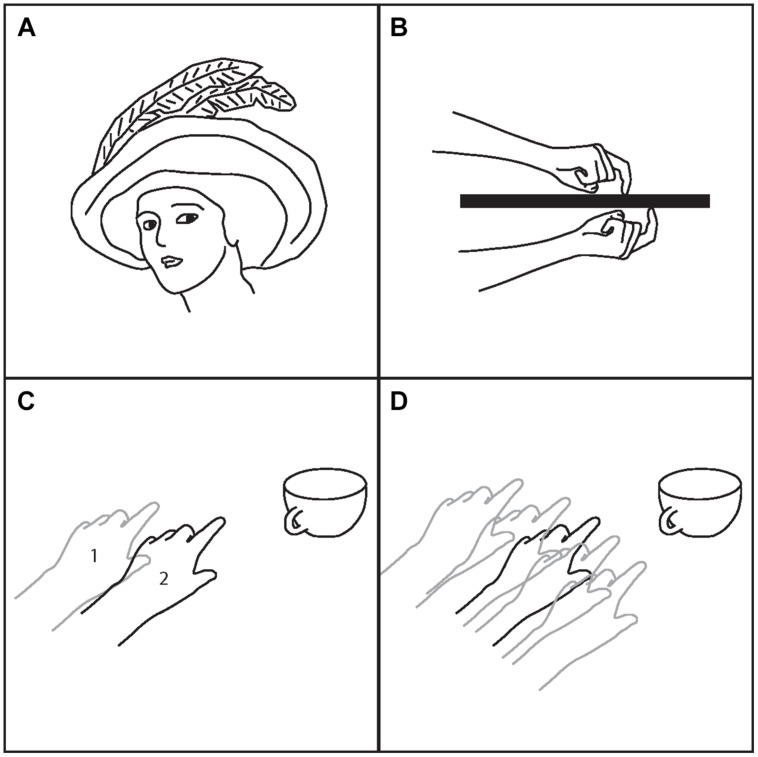FIGURE 2.
Examples of model-based control. (A) To enter a car without hitting your head requires the body schema to include an accurate model of the shape of your head. Women who wore feathered hats would develop an altered body schema to incorporate the hat, and would avoid hitting the feathers (Head and Holmes, 1911). (B) The body schema depends on visual and somatosensory input, among other sources of information. Somatosensory input, however, is less accurate than visual. If you put your left hand under the table and leave it for a few minutes, the body schema begins to lose a precise representation of arm position. It is then difficult to point with the right hand, on top of the table, to the exact location of the left hand. (C) If the hand is perturbed from point 1 to point 2, but the body schema does not register that change, reaching becomes inaccurate. In this case, the real position is closer to the cup than the position registered by the body schema. The result will be an overreach that may knock over the cup. (D) In some cases the body schema loses specificity. The position of the arm is not precisely represented. In that case maintaining a steady arm position is difficult, especially in the face of external, perturbing forces, and reaching accurately is no longer possible.

